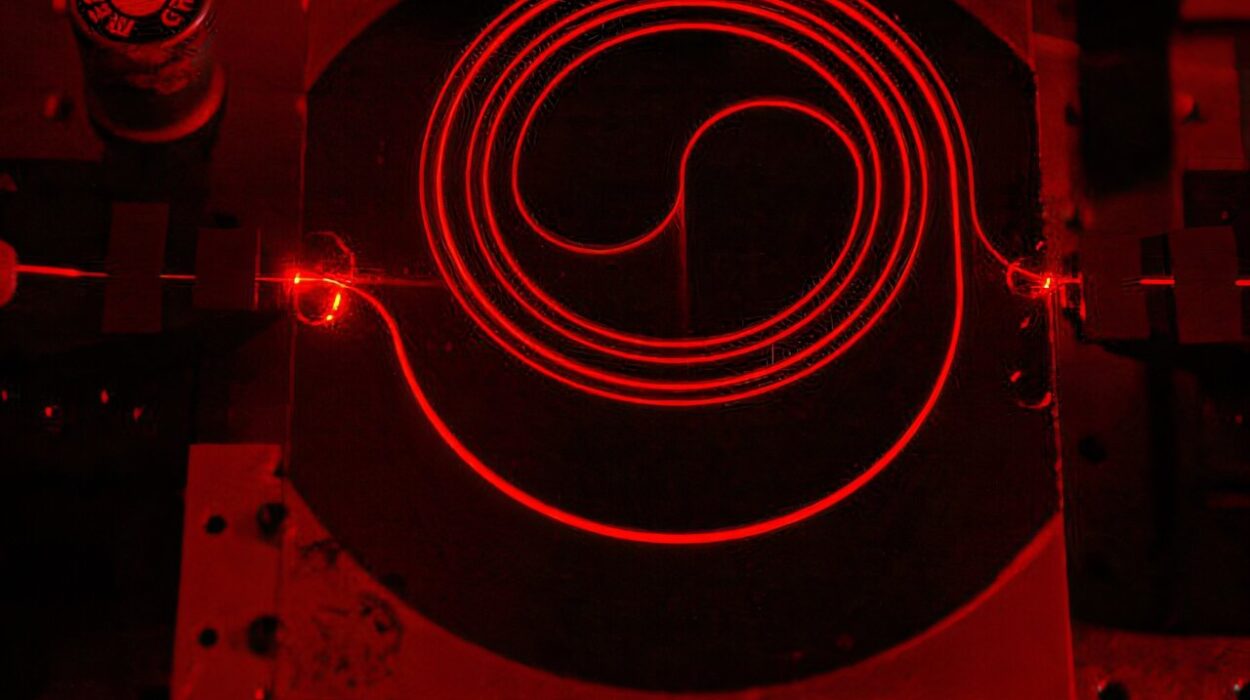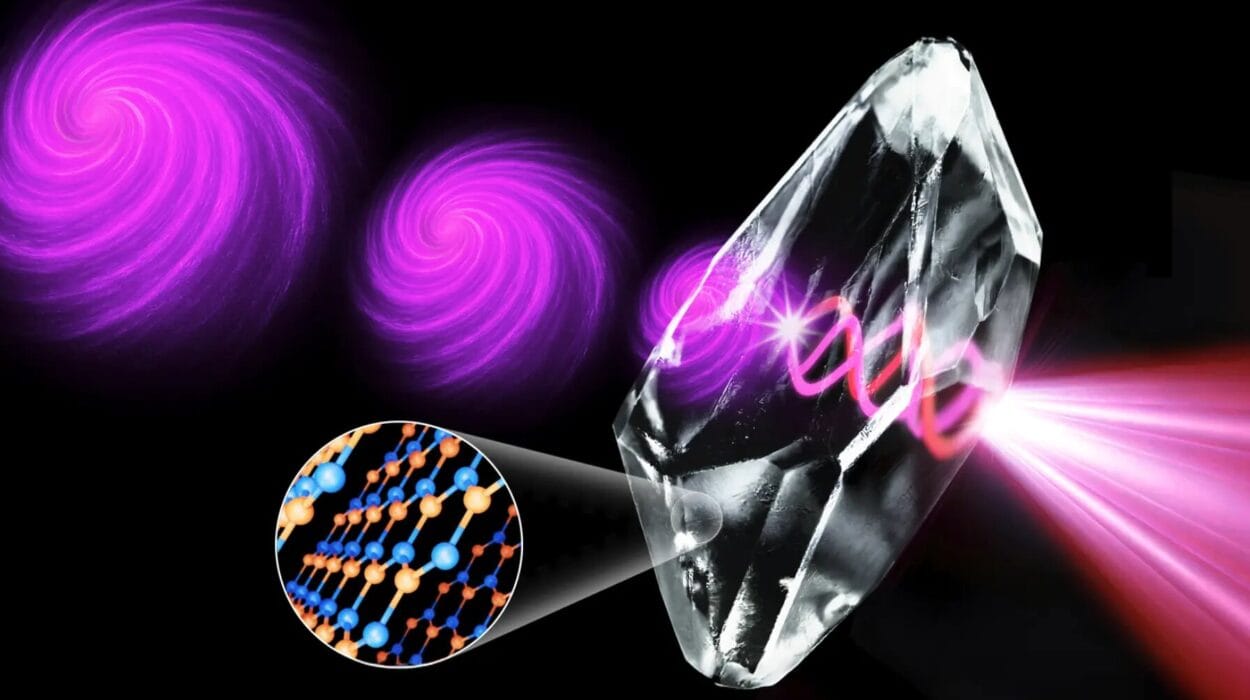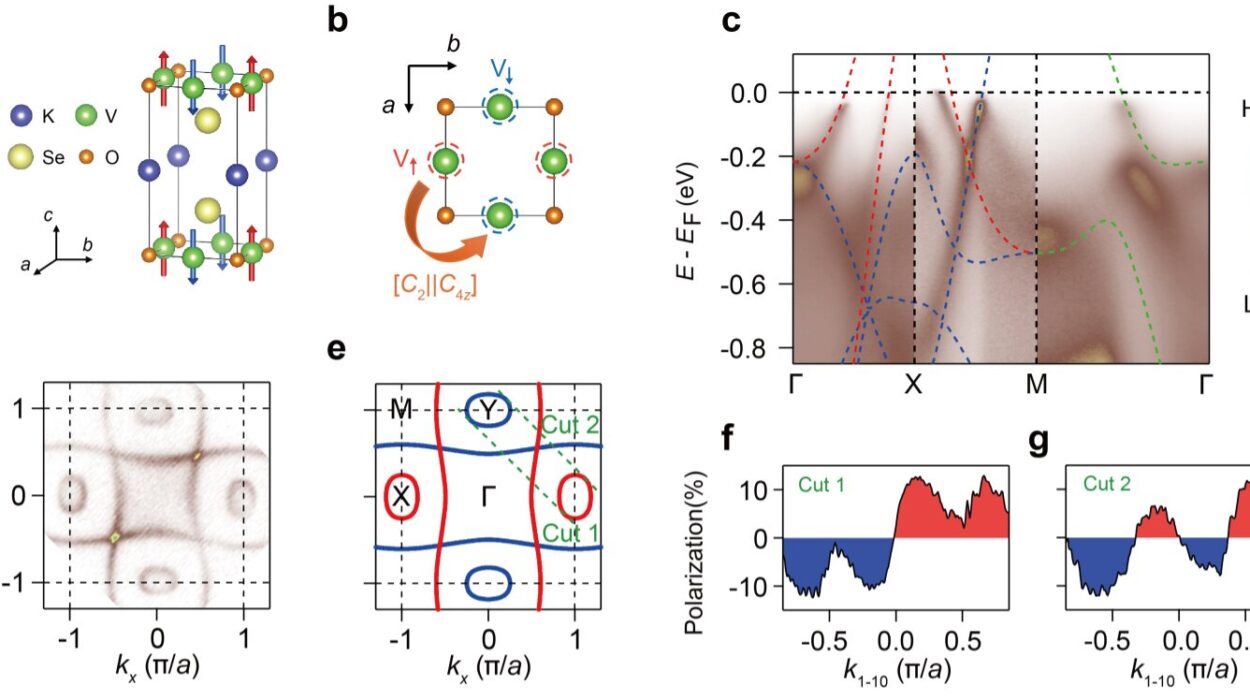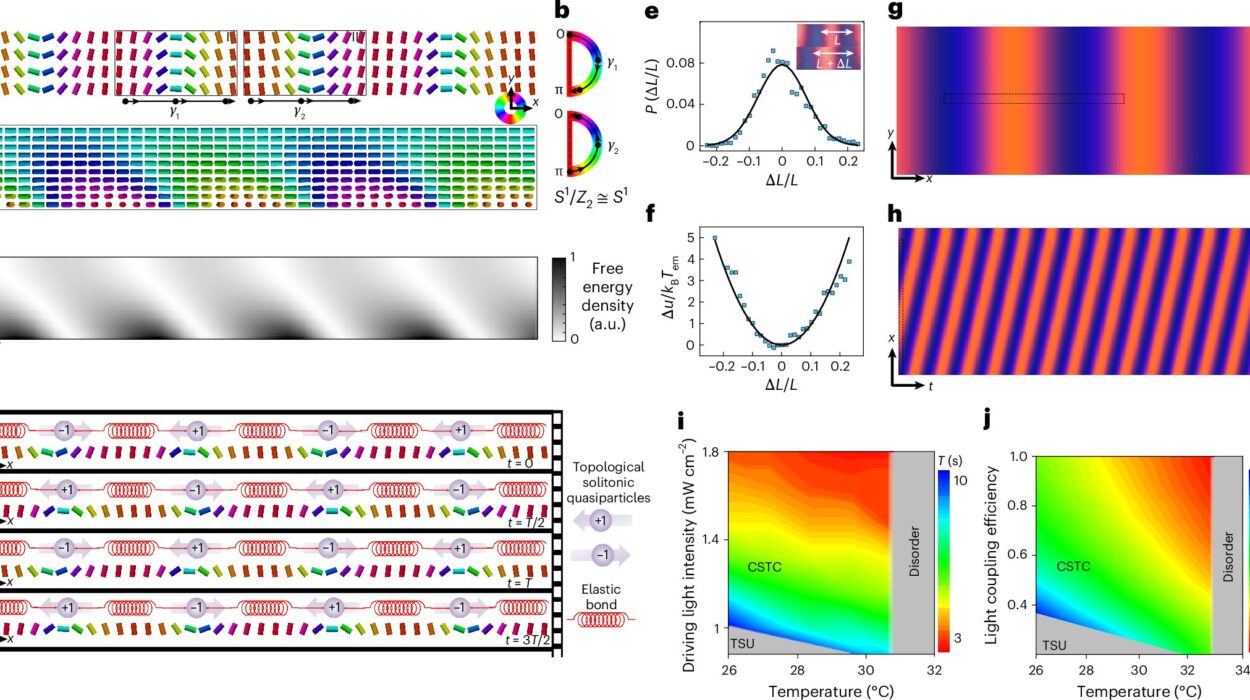In the microscopic universe of atoms and electrons, where the known laws of physics have long governed material behavior, a quiet revolution is underway. The rules of magnetic order—once considered ironclad—are now being questioned. Why? Because a material long thought to be non-magnetic in its bulk form has suddenly developed ferromagnetic properties when sliced down to atomically thin layers. This discovery could open the door to an entirely new class of electronic devices that are faster, smaller, and more efficient.
The material in question is chromium selenide (Cr₂Se₃), a compound that, in its traditional three-dimensional crystalline form, exhibits antiferromagnetism. In this state, magnetic moments align in opposite directions and cancel each other out, resulting in no net magnetization. But when researchers peeled back the layers—literally—they found that Cr₂Se₃ in two-dimensional form was anything but tame. It became magnetic. And not just magnetic, but increasingly ferromagnetic the thinner it got.
This stunning result, published in Nature Communications, comes from an international team of researchers from Tohoku University, Université de Lorraine (Synchrotron SOLEIL), the National Synchrotron Radiation Research Center (NSRRC), High Energy Accelerator Research Organization, and the National Institutes for Quantum Science and Technology. Using advanced molecular beam epitaxy techniques, they successfully synthesized atomically thin layers of Cr₂Se₃ on graphene substrates—and discovered a whole new magnetic world.
The Shock of the Unexpected
“When we first observed the ferromagnetic behavior in these ultra-thin films, we were genuinely shocked,” said Professor Takafumi Sato of Tohoku University’s WPI-AIMR, the lead scientist on the study. “Conventional theory told us this shouldn’t happen. What’s even more fascinating is that the thinner we made the films, the stronger the magnetic properties became—completely contrary to what we expected.”
This finding overturns decades of theoretical assumptions. According to the Mermin-Wagner theorem, long-range magnetic order in two-dimensional systems should be impossible at finite temperatures. In essence, the thermal fluctuations in 2D systems were thought to be strong enough to disrupt any stable magnetic alignment. And yet, here was a material breaking the rules—in broad daylight, under high-resolution synchrotron X-rays.

Molecular Beam Epitaxy: The Magic Fabrication Wand
How was this feat accomplished? The secret lies in the precise growth of two-dimensional Cr₂Se₃ using molecular beam epitaxy (MBE), a highly controlled process that allows atomic-scale layering of materials. The research team deposited chromium and selenium atoms onto a graphene substrate, creating monolayer to trilayer films.
Graphene—celebrated for its own superlative properties including high conductivity and strength—played a crucial role. Not just a passive scaffold, it turned out to be an active partner in reshaping Cr₂Se₃’s behavior. As the thin film grew layer by layer, it became a canvas on which electron interactions were dramatically altered.
Once the ultrathin films were ready, the team used high-brightness synchrotron X-ray beams to probe their electronic and magnetic states. The results were unequivocal: ferromagnetism emerged robustly in the monolayer film, and even more surprisingly, the ferromagnetic transition temperature—typically denoting the point at which a material becomes magnetically ordered—increased as the film became thinner.
Unveiling the Quantum Mechanism
To understand why this was happening, the team turned to micro-Angle-Resolved Photoemission Spectroscopy (micro-ARPES), an advanced technique capable of visualizing electronic states with nanoscale precision. The micro-ARPES data revealed the smoking gun: conduction electrons were being injected from the graphene substrate into the Cr₂Se₃ films. These electrons provided the necessary glue to stabilize long-range ferromagnetic order in what should have been a fluctuating, disordered 2D system.
This process—electronic doping via interface charge transfer—essentially rewired the magnetic interactions at the atomic scale. Instead of magnetic moments canceling out, as in the antiferromagnetic bulk material, the electron doping favored parallel spin alignment. The result? A robust, controllable 2D ferromagnet that defies traditional models.
A New Era for Spintronics
Why does this matter? Because it propels us closer to a technological frontier where electronics don’t just rely on the charge of electrons, but also on their spin. Spintronics, short for “spin-based electronics,” aims to exploit both these fundamental properties to develop devices that are faster, consume less power, and have non-volatile memory. Imagine smartphones that boot instantly, hard drives that use a fraction of today’s energy, and quantum computers that store information more securely.
Ferromagnetic 2D materials like the new Cr₂Se₃ films are a cornerstone for this vision. Their ultra-thin nature makes them compatible with next-generation nanoscale device architectures, and their magnetic behavior—tunable through interface engineering—offers new levers for control and innovation.
Until now, most 2D magnets suffered from low transition temperatures and fragile magnetic states, limiting their practical applications. But Cr₂Se₃ bucks the trend. Its ferromagnetic strength increases as it gets thinner, and it functions at relatively high temperatures. This makes it a prime candidate for real-world spintronic applications, from magnetic sensors and memory to transistors that process both charge and spin.
Graphene’s Role as a Quantum Catalyst
Graphene’s involvement in this magnetic awakening cannot be understated. Its atom-thin lattice of carbon atoms has long been hailed as a wonder material, but in this study, it played a transformative role. By donating electrons to the adjacent Cr₂Se₃ layers, graphene not only enabled magnetic order, but actively intensified it. This interface engineering—deliberately designing the boundary between two materials to manipulate electronic behavior—demonstrates the subtle power of heterostructures in material science.
Moreover, the team’s use of graphene is significant because it opens the door to creating a family of van der Waals heterostructures—layered stacks of 2D materials with precisely tailored properties. By adjusting parameters like doping level, substrate choice, or strain, researchers can now “dial in” desirable traits like conductivity, magnetism, or optical responsiveness.
Beyond the Horizon: NanoTerasu and the Future
The journey doesn’t end here. The research team plans to continue their investigations using the newly built NanoTerasu synchrotron radiation facility, which promises ultra-high brightness and spatial resolution. With NanoTerasu’s capabilities, the scientists aim to uncover even more about the intricate dance of electrons and spins at the atomic scale. They will probe deeper into the temperature dependence, domain formation, and quantum fluctuations of 2D ferromagnets like Cr₂Se₃.
Beyond fundamental research, the practical roadmap is becoming clearer. By integrating 2D ferromagnetic materials into devices, engineers could develop spin filters, spin transistors, and high-speed memory elements. These components could revolutionize how we store, process, and transmit data—fueling everything from next-gen mobile tech to ultra-secure communication systems.
Redefining What’s Possible
The transformation of chromium selenide from an antiferromagnetic non-metal into a 2D ferromagnet is more than a scientific curiosity—it’s a paradigm shift. It challenges deep-rooted assumptions in condensed matter physics, opens new directions in quantum materials research, and lays critical groundwork for a future driven by spintronics.
As the boundaries between materials, dimensions, and disciplines continue to blur, discoveries like this remind us that nature still holds many surprises. We just need the right tools—and the right perspective—to see them. In the end, the magnetic awakening of Cr₂Se₃ isn’t just about rewriting the rules. It’s about realizing that the rulebook itself is still being written.
Reference: C.-W. Chuang et al, Spin-valley coupling enhanced high-TC ferromagnetism in a non-van der Waals monolayer Cr2Se3 on graphene, Nature Communications (2025). DOI: 10.1038/s41467-025-58643-3






